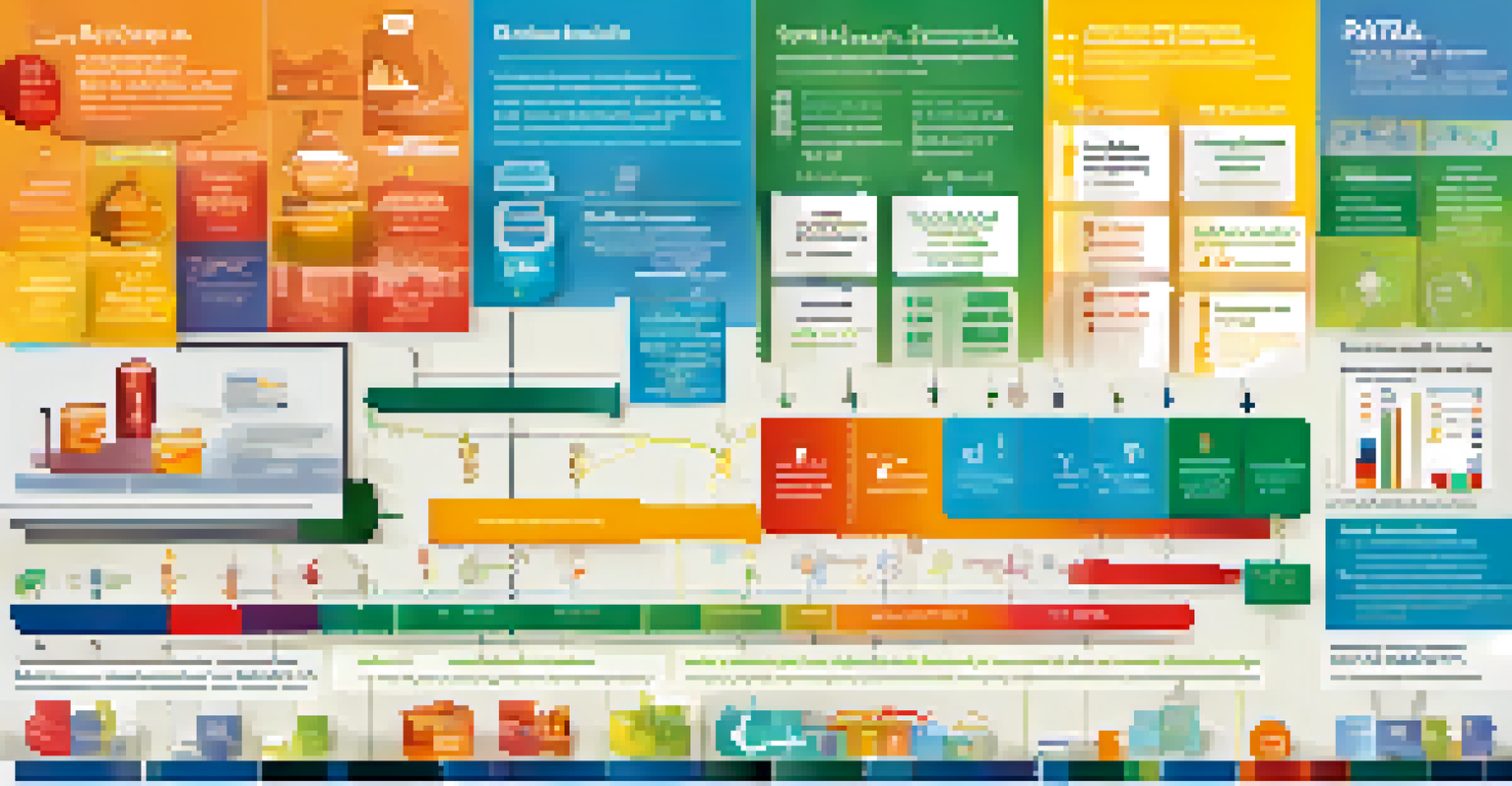The Importance of Data in Shaping Community Health Programs

Understanding Community Health Programs and Their Goals
Community health programs are designed to improve the overall health of a population. They focus on preventive care, health education, and access to essential services. By addressing specific health needs, these programs aim to reduce disparities and enhance the quality of life for community members.
Without data, you're just another person with an opinion.
For instance, a program targeting childhood obesity might provide nutrition education and physical activity resources. The goal is to empower families to make healthier choices, ultimately fostering a healthier future generation. Understanding these goals is vital to effectively measure success and impact.
However, the effectiveness of these programs largely depends on how well they are tailored to the community's unique needs. This is where data plays a crucial role, helping to identify health trends and areas needing attention.
The Role of Data in Identifying Health Trends
Data acts as a lens through which we can observe the health landscape of a community. By analyzing statistics such as disease prevalence, demographic information, and social determinants of health, stakeholders can pinpoint prevalent issues. For example, a spike in asthma cases might indicate environmental factors that need addressing.

Moreover, local health departments often gather data through surveys and health assessments, which provide insights into community members' needs and concerns. This information is invaluable for shaping programs that genuinely resonate with those they aim to serve.
Data Drives Health Program Design
Utilizing data allows for targeted interventions that address specific health issues within a community.
In essence, data not only highlights existing health challenges but also helps predict future trends, allowing for proactive rather than reactive measures in community health strategies.
How Data Drives Program Design and Implementation
Once health trends are identified, data plays a pivotal role in designing targeted interventions. For instance, if data shows high rates of diabetes in a community, programs can be tailored to focus on diabetes management and prevention. This focused approach ensures resources are utilized efficiently.
The goal is to turn data into information, and information into insight.
Furthermore, data informs the implementation phase by establishing benchmarks for success. Setting measurable goals allows program coordinators to track progress and make necessary adjustments along the way. It’s like navigating a journey; knowing your destination and the route ensures a smoother ride.
Ultimately, integrating data into program design fosters more effective and relevant health initiatives, increasing the likelihood of positive health outcomes.
Evaluating Effectiveness Through Data Analysis
Once a community health program is in place, evaluating its effectiveness is essential. Data analysis provides insight into whether the program meets its objectives and benefits the community. For example, tracking health outcomes over time can reveal if interventions are producing the desired results.
Moreover, qualitative data, such as feedback from community members, can offer a deeper understanding of how well a program is received. This feedback is invaluable for making improvements and ensuring the program remains relevant to community needs.
Evaluating Programs with Data Analysis
Ongoing data analysis is crucial for assessing the effectiveness of health programs and making necessary improvements.
By continuously assessing effectiveness through data, health programs can adapt and grow, ultimately leading to stronger community health outcomes.
The Importance of Accessible Data for Community Involvement
Accessible data is crucial for fostering community involvement in health initiatives. When community members have access to relevant health data, they are more likely to engage with programs and advocate for their own health needs. This empowerment can lead to a more active and informed community.
For instance, if residents are aware of increasing rates of mental health issues in their area, they may be more inclined to support local mental health initiatives. Transparency encourages dialogue and collaboration, allowing community voices to shape the programs that affect them.
Overall, making data accessible not only enhances community involvement but also builds trust between health organizations and the populations they serve.
Collaborating with Data Experts for Better Outcomes
Collaboration with data experts, such as epidemiologists and statisticians, can significantly enhance community health programs. These professionals bring their expertise in data analysis and interpretation, enabling programs to make informed decisions. Their insights can help pinpoint which strategies are most effective.
For example, a health program aimed at increasing vaccination rates can benefit from data experts who analyze demographic trends to target outreach efforts effectively. This collaboration ensures that every decision made is backed by solid evidence, leading to better health outcomes.
Community Involvement Through Transparency
Making health data accessible empowers community members to engage with health initiatives and advocate for their needs.
By working together, health organizations and data experts can create a more robust framework for program development and implementation.
The Future of Community Health Programs and Data Integration
As technology continues to evolve, the integration of data in community health programs will only deepen. Emerging tools like big data analytics and artificial intelligence can offer even more nuanced insights into community health trends. This evolution opens up new possibilities for tailored health interventions.
For instance, predictive analytics can help identify at-risk populations before health issues escalate, allowing for timely interventions. These advancements promise to revolutionize how we approach community health, making programs more proactive and efficient.

In conclusion, the future of community health programs lies in a robust partnership with data, ensuring that initiatives are not only responsive but also forward-thinking.